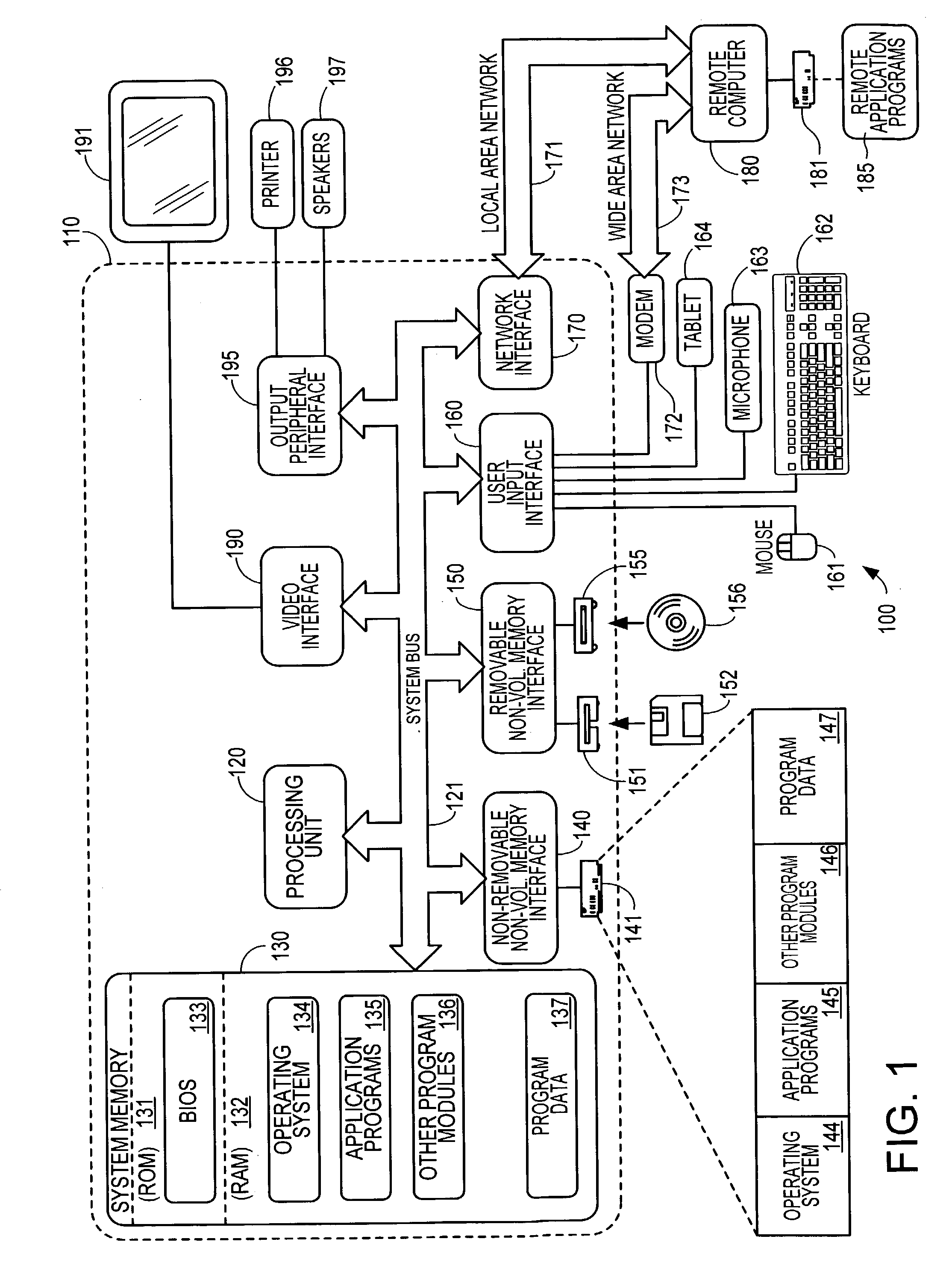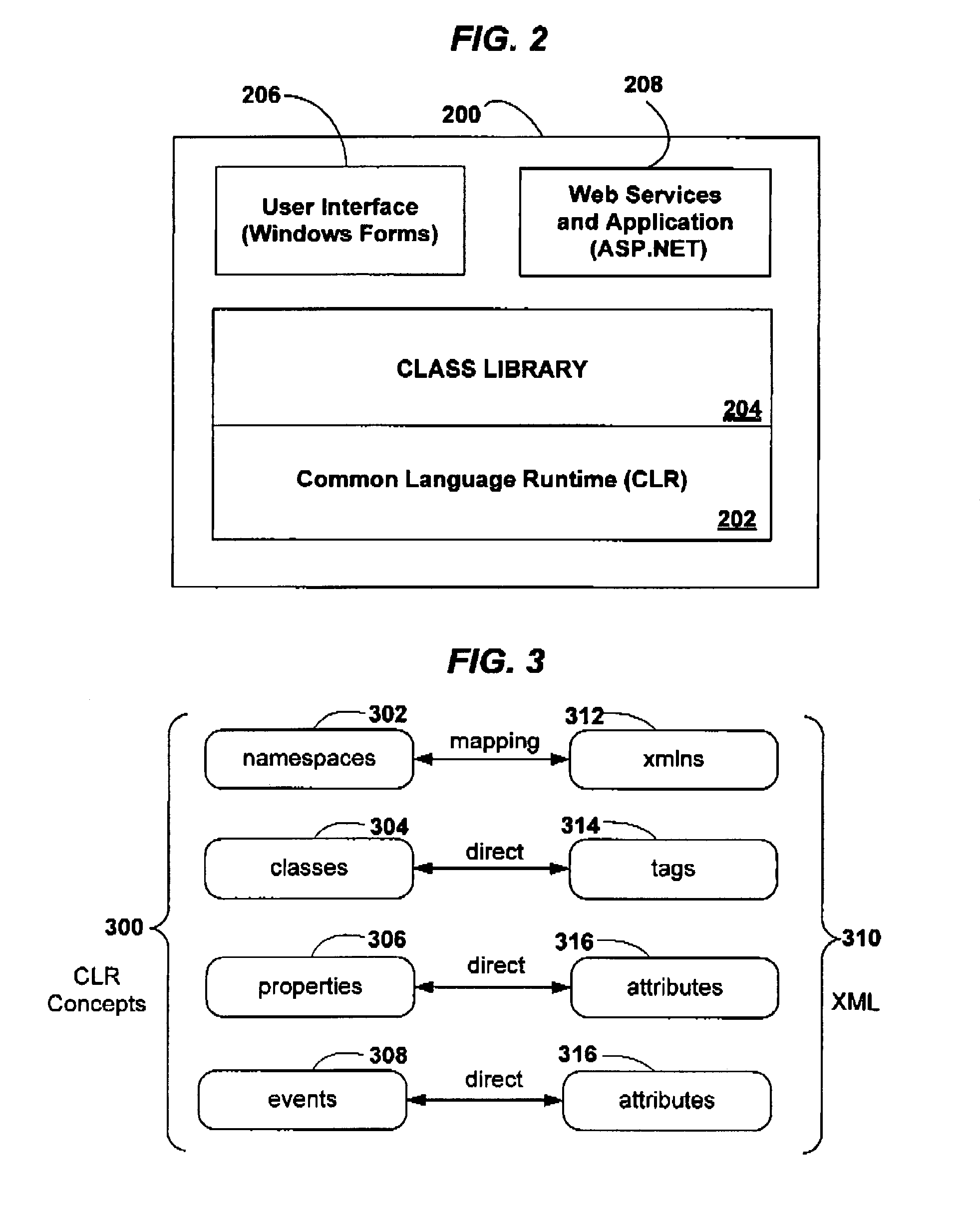Declarative mechanism for defining a hierarchy of objects
a technology of object hierarchy and object definition, applied in the field of computer systems, can solve the problem and achieve the effect of time-constrictive time for item loading
- Summary
- Abstract
- Description
- Claims
- Application Information
AI Technical Summary
Benefits of technology
Problems solved by technology
Method used
Image
Examples
Embodiment Construction
[0017]The invention provides a mechanism that allows a user to specify a hierarchy of objects and the programmatic logic behind the hierarchy of objects with an XML based markup language. This provides the ability for an object model to be described in XML. One result is that the extensible classes such as classes in the Common Language Runtime (CLR) of the .NET Framework by Microsoft Corporation can be accessed in XML. The number of classes in CLR is continuously growing, which means that the XML representation of object models is dynamically growing. As described herein, the mechanism provides a direct mapping of XML tags to CLR objects and the ability to represent related code in the markup. The mechanism can be used to create fixed-format documents, adaptive-flow documents, vector graphic drawings, application user-interfaces and controls, and the like in XML markups and any combination of the foregoing.
[0018]Turning to the drawings, wherein like reference numerals refer to like...
PUM
 Login to View More
Login to View More Abstract
Description
Claims
Application Information
 Login to View More
Login to View More - R&D
- Intellectual Property
- Life Sciences
- Materials
- Tech Scout
- Unparalleled Data Quality
- Higher Quality Content
- 60% Fewer Hallucinations
Browse by: Latest US Patents, China's latest patents, Technical Efficacy Thesaurus, Application Domain, Technology Topic, Popular Technical Reports.
© 2025 PatSnap. All rights reserved.Legal|Privacy policy|Modern Slavery Act Transparency Statement|Sitemap|About US| Contact US: help@patsnap.com



